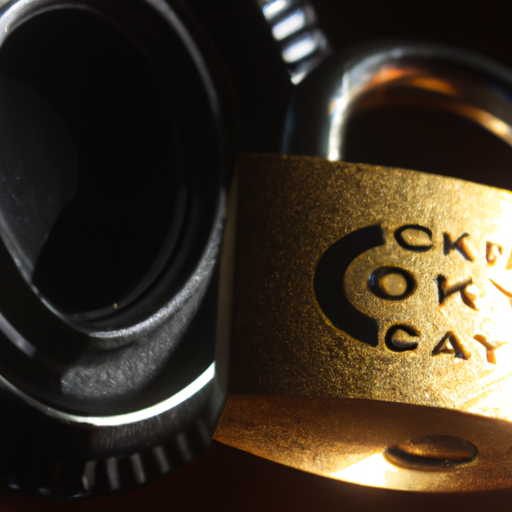If you’re an avid photographer or someone who regularly uses photographs for various purposes, it is crucial to understand the ins and outs of copyright laws pertaining to photography. In this article, we will explore the basics of copyright laws and how they apply specifically to photographs. By gaining a clear understanding of these laws, you can ensure that you are both respecting the rights of photographers and protecting your own work. So, let’s dive into the world of copyright laws for photographs and unravel the mystery behind this important legal framework.
Understanding Copyright Laws for Photographs
If you are a photographer or someone who frequently uses and shares photographs, it is important to have a solid understanding of copyright laws. Copyright is a legal concept that provides creators with exclusive rights to their original works, including photographs.
What is Copyright?
Copyright is a form of intellectual property protection granted to authors, artists, and creators of original works. It gives the creator exclusive rights to reproduce, distribute, display, perform, and create derivative works from their original creations. This means that the copyright owner has control over how their work is used and can decide who can use it and under what circumstances.
Why is Copyright Important for Photographs?
Copyright is particularly important for photographs because they are easily reproduced and shared in today’s digital age. By understanding and respecting copyright laws, you can protect your own photographs from unauthorized use and ensure that you have the right to control how your work is used by others. Additionally, respecting copyright laws helps to foster creativity and incentivizes photographers to continue producing high-quality work.
Copyright Ownership for Photographs
In the context of photographs, the general rule is that the person who takes the photograph is the initial copyright owner. This means that as a photographer, you have automatic copyright protection for your photographs the moment you create them. However, there are some exceptions to this rule. For instance, if the photograph was taken as part of your employment or if you have entered into a contractual agreement with someone else, the copyright ownership might belong to someone other than yourself. It is important to clarify copyright ownership upfront to avoid any disputes or confusion later on.
Works Eligible for Copyright Protection
Not all photographs are eligible for copyright protection. To be eligible, a photograph must meet certain criteria. Firstly, it needs to be an original work created by the photographer. This means that it must be a result of the photographer’s own creativity and not simply a replication of someone else’s work. Secondly, the photograph must be fixed in a tangible medium, such as a digital file or print. Lastly, the photograph must possess a minimum level of creativity or originality. While this standard is relatively low, it ensures that simple snapshots or mundane images do not qualify for copyright protection.
Rights of Copyright Owners
As the copyright owner of a photograph, you have several exclusive rights. These include the right to reproduce the photograph, distribute copies of it, display it publicly, and create derivative works based on it. This means that you have the power to control who can use your photograph and how it can be used. You can license your photograph to others, sell prints, or use it as a basis for creating different compositions. Having these rights allows you to protect your creative work and potentially profit from it.
Duration of Copyright Protection
The duration of copyright protection for photographs varies from country to country. In most countries, including the United States, copyright protection lasts for the life of the author plus an additional 70 years. After this period expires, the photograph enters the public domain and can be freely used by anyone. It is important to note that copyright protection begins automatically and does not require registration or any other formalities. However, registering your copyright can provide additional benefits, as discussed in the next section.
Registering Copyright for Photographs
Although copyright protection is automatic, registering your photographs with the appropriate copyright office can provide you with additional legal benefits. In many countries, including the United States, registration is not mandatory but is highly recommended. Registering your copyright creates a public record of your ownership and makes it easier to pursue legal action in case of copyright infringement. Additionally, registered works are eligible for statutory damages and attorney’s fees in the event of infringement, which can be a significant advantage in seeking compensation.
Fair Use of Copyrighted Photographs
Fair use is a legal principle that allows for the limited use of copyrighted material without the permission of the copyright owner. It is important to understand that fair use is a complex and subjective concept, and its application to photographs can vary depending on the circumstances. Generally, fair use is more likely to apply in cases where the photograph is used for educational, commentary, criticism, or transformative purposes. However, the determination of fair use ultimately depends on a case-by-case analysis, taking into account factors such as the nature of the use, the effect on the market for the photograph, and the amount and substantiality of the portion used.
Infringement of Copyrighted Photographs
The unauthorized use of a copyrighted photograph without the permission of the copyright owner constitutes copyright infringement. This can occur when someone reproduces, distributes, displays, or creates derivative works from a photograph without the necessary rights. Copyright owners have the right to take legal action against infringers and seek remedies, which may include damages, injunctions, and attorney’s fees. To protect yourself from infringement, it is important to clearly mark your photographs with a copyright notice and monitor their use online.
Remedies for Copyright Infringement
If you discover that your copyrighted photograph has been infringed, there are several remedies available to you. The first step is often to send a cease and desist letter, requesting the infringing party to stop using your photograph. If this does not resolve the issue, you may choose to pursue legal action, which can result in the payment of damages, injunctions to stop the infringement, and reimbursement of attorney’s fees. In some cases, particularly egregious instances of infringement, criminal charges may be brought against the infringer. It is important to consult with an attorney who specializes in copyright law to determine the best course of action for your specific situation.
In conclusion, understanding copyright laws for photographs is crucial for both photographers and users of photographs. By familiarizing yourself with these laws, you can protect your own creative work and respect the rights of others. Remember to always obtain permission or ensure that your use of a photograph falls within the boundaries of fair use. By doing so, you contribute to a culture of creativity, respect, and legal compliance within the world of photography.

